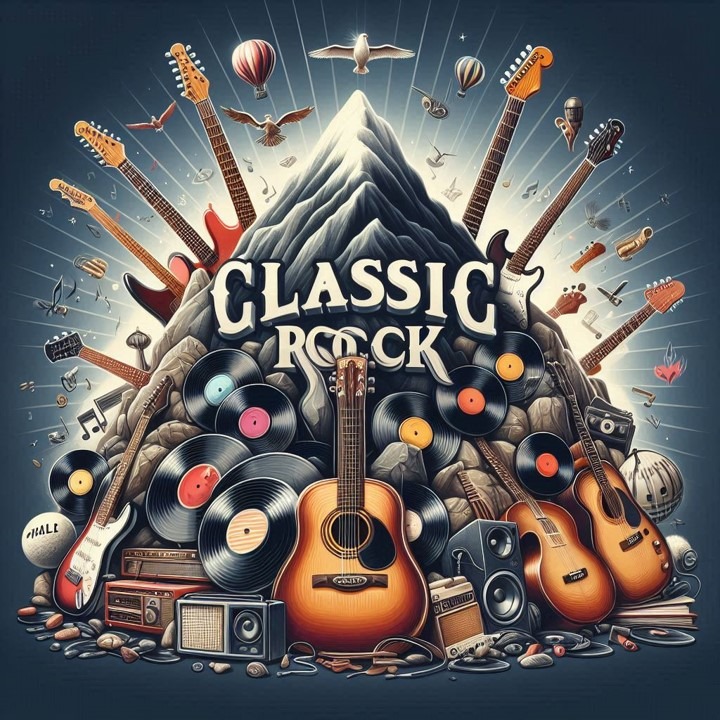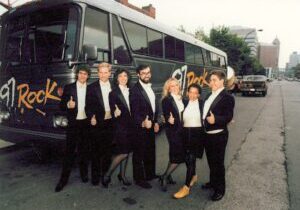
The headline of today’s blog may seem a little bit self-serving to you. Coming from me, it may even seem egotistical, self-important, and pompous.

Andrew Van Dam via LinkedIn
But I didn’t write it. In fact, it’s the opening line from a new Washington Post/YouGov research study that a number of you brought to my attention. It’s the latest effort from WaPo’s Department of Data headed up by Andrew Van Dam (pictured). Every Friday, Van Dam’s team tackles another of those big, hairy questions, and this week it was this: “What your favorite music says about you – and your politics.”
Oddly enough, I covered the political aspect of how the music you love defines your politics – or maybe it’s vice-versa – in a recent blog post when Techsurvey 2024 data first started rolling out. You can read it here and download the entire report on radio format fans and their political party preferences here.
Not surprisingly, they don’t differ much from what Van Dam’s team at the Post came up with. It generated charts like the one below from Techsurvey 2024:

Despite its driving question, the WaPo article’s real value is its unabashed affirmation of Classic Rock’s dominance, pretty much across the entire spectrum – gender, age (except for 18-29 year-olds), among all income levels and in every region of the U.S. And the format takes top honors among both Democrats and Republicans, although its appeal is decidedly “redder.” While it dominates with white consumers, it struggles with both Blacks and Hispanics. Still, this performance is a formatic tour de force as nothing else in the music spectrum comes close.
YouGov’s sample is comprised of 1,000 representative adults 18+ in a survey conducted in 2023.
This monster chart likely contains a half dozen sales pieces for Classic Rock sales teams:
And it doesn’t stop there. Classic Rock is the format that most Americans say “best reflects their lives.” On the standard 1-5 “love/hate” scale, a rousing 43% give the Classic Rock genre “Love it” ratings with the least amount of negatives of all those tested. In a distant second place is Pop with 27% “Love it” scores.
Hopefully, you’ll be able to access the entire article and all its compelling charts here. (If not, it would be worth a subscription to the Post.)
A few observations….
The research by WaPo/YouGov may be more of an exercise in branding than a test of musical tastes. What I mean by that is the research affirms the popularity of the label “Classic Rock,” not necessarily the music. In fact, Van Dam and his co-author Travis Chase question where Classic Rock begins and ends, as well as the ambiguity of precisely who and what artists best fit under the format umbrella.
That task has been left to me and the hundreds of radio pros who have programmed Classic Rock stations since the format took off in the mid-80’s, first at WMMQ in Lansing (where it is still going strong today), and soon thereafter, across the U.S.
Classic Rock stations since the format took off in the mid-80’s, first at WMMQ in Lansing (where it is still going strong today), and soon thereafter, across the U.S.
It’s a debate still very much alive today, as programmers continue to test the limits of a format that has now fragmented into different variants, from Classic Hits on one end of the spectrum to Classic Rock That Rocks on the other. And in an effort to bring more youthful listeners to the party, many continue to flirt with more and more 90’s songs.
The power of the brand is undeniable. The first time I drove up Atlantic Avenue in Delray Beach, I passed the only bar presenting live music every night, Johnnie Brown’s. It’s hard to miss the “CLASSIC ROCK” in neon as you cruise down Atlantic from the west.
It wasn’t always this way. In the early years when the format first debuted on radio stations across America, much of the coverage in industry publications was cautious, even skeptical. Many thought (or hoped) it would never last. This 1986 headline was typical, as was the way Classic Rock was covered in the body of the story:

I thought I’d cap off today’s post with a list of 10 key lessons I’ve learned along this amazing journey of a format/genre whose mass appeal, resilience, and staying power are irrefutable:
1. The power of nostalgia – It’s the guts and glue of this format, conjuring up the most powerful images, sights, smells, and sounds for most adults. Classic Rock’s emotional attraction is part of a fan’s DNA. For so many listeners, the music library connects with some of the seminal moments in their lives.
2. What’s the story? – When it’s done right, Classic Rock isn’t just a collection of songs – it’s the narrative of the artists who made the music. Old pros like Nick Michaels, Bill St. James, Jim Ladd, Nik Carter, Bob Stroud, and so many others have kept these stories – and the music – alive, vital, and fresh. We consistently hear younger listeners talk about those “stories behind the songs.”
3. What about the audience? They have their stories, too. And smart Classic Rock stations have tapped into this amazing resource for features from “Hey Mom, I’m on KLH” to WCSX’s “Fab Four Fridays.” The music become even more powerful when it reflects wonderful memories from listeners.
4. Let’s hear it for focus groups – All the data coming in from Arbitron back then, perceptual studies, and music tests were highly telling and strategically useful. But the “pure gold” came from listeners themselves, usually in the form of focus and Listener Advisory Board groups. The process of talking to listeners and “test driving” concepts gave us the permission to experiment with new concepts, while also warning us when we were going too far.
5. Branding matters – As I learned firsthand, when the format/genre/brand are one and the same, it acts as a form of audience shorthand. Originally, the name “Good Time Rock n’ Roll” was used at KRQX-AM in Dallas, but it was scrapped during the very first set of focus groups. The listeners couldn’t remember the slogan, it wasn’t well-accepted, and they spontaneously described the music as “classic.” We quickly shifted to what is obviously a wonderful brand name.
6. The sales department – In the early years, salespeople wanted to know what format Classic Rock sounded like. As I explained in countless sales meetings at the time, Classic Rock is a unique animal on the radio dial. That what made it so special. These days, the challenge is salespeople who are tired of the music. As the WaPo article points out so well, this is not a problem with the audience.
7. Outside exposure – When Classic Rock songs started appearing in commercials, TV, shows, video games, and movies, some warned it would overexpose the music On the contrary, it has made the genre more familiar and more attractive with its presence in these places. I recently saw yet another ad using Norman Greenbaum’s “Spirit in the Sky.” It just doesn’t get old. This is one of my favorites:
8. Think mass appeal – Classic Rock appeals to so many people because it’s timeless. But core fans think of it as an artist-driven format. In fact, format P1s often think about its seminal artists in worshipful Mt. Rushmore terms – the gods of Classic Rock. But more casual listeners don’t know Eric Clapton from Eric Burden from Eric Carmen. But they love the songs, thus broadening the fan base.
9. Thanks to technology, the music is timeless – Put away those “if you were born in _____” slide rules. Thanks to the iPod and streaming, fans don’t care whether the music came out in 1967, 1979, or 1985. As a result, under 40s often enjoy the music as much as, if not more than, people like me who enjoyed it when it first was released.
10. The collectible market – The rise in the popularity of vinyl and memorabilia in general has been good for Classic Rock. The songs and albums are all part of the “music tangible” era, and there’s a huge market for this stuff. That makes the music’s value even more powerful to another set of fans, just as people collect art, cars, and baseball cards.
Bonus observation; The music lives on even as band members and artists pass away. For those that continue touring – think the Eagles post-Glenn Frey – or Bruce Springsteen post-Clarence Clemons – well-selected “replacements” work out just fine. This is a genre that also gets “extra lives,” thanks to tribute bands, films (think “Bohemian Rhapsody”), and documentaries (think “Get Back” on Disney+).
This WaPo/YouGov study is important because of its thoroughness and the fact it was not conducted by a radio-friendly organization, but by a media outlet with no dog in the hunt. It also underscores that while the brand “Classic Rock” is stronger than ever, radio companies need to continue to research how they define their version of the format – by era, tempo, and even the local flavor, more prevalent in some markets more than others.
But clearly, the foundation of the format and its underpinnings are impressive. Local radio – more than any other medium – has the opportunity to own this turf and reap the benefits of a music genre that has a powerful hold all across America. It has been a career highlight for me to lead the charge for this cultural phenomenon.
Long live Classic Rock!
Originally published by Jacobs Media







